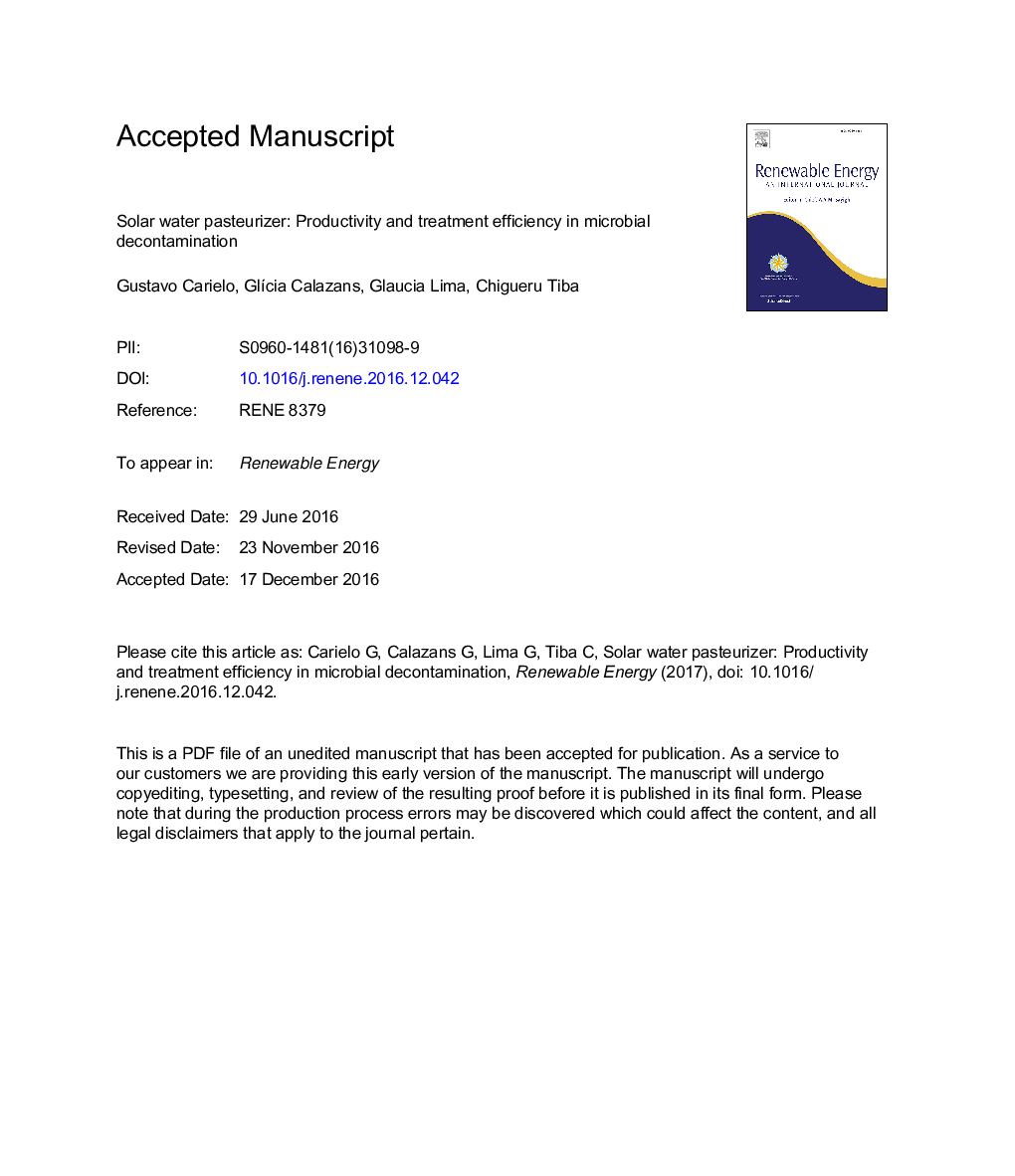| Article ID | Journal | Published Year | Pages | File Type |
|---|---|---|---|---|
| 4926434 | Renewable Energy | 2017 | 34 Pages |
Abstract
The ingestion of contaminated water is a major cause of disease and death in developing countries. The decontamination of water can be achieved by different methods of treatment. However, solar pasteurization shows promise for inactivating microorganisms at different temperatures. In this work, a solar pasteurization system operating by automated batches has been both designed and tested. A flat solar collector with 2 m2 of aperture, a heat exchanger, two solenoid valves, two thermoresistances and an electronic control were used to perform water treatment in different preprogrammed “set points”: 3600 s at 55 °C; 2700 s at 60 °C; 1800 s at 65 °C; 900 s at 75 °C and 15 s at 85 °C. The system showed advantages over other existing pasteurizers in literature when it comes to the possibility of performing treatment in several temperatures, the complete segregation between water masses and the ability of controlling water residence time in the solar collector. The use of heat exchanger has great importance since it implies increased productivity of about 110% and significant reduction of solar radiation cutting level at about 6.6 MJ/m2 day. The experimental data also showed that it was possible to achieve productivity of 80 L of treated water in a day of clear sky. Furthermore, the pasteurizer remained stable for elimination efficiency of the tested microorganisms, considering the 85 °C treatment temperature for 15 s. Bacteriological analysis after treatment showed absence of total coliforms and Escherichia coli, MPN <1.1 Pseudomonas aeruginosa and 98.7% average reduction of heterotrophic bacteria at different levels of water sample contamination.
Keywords
EMBICOLLANVISAMPVPTCP. aeruginosaMPNNTUCFUSODISPCASafe waterEscherichia coliUltravioletE. coliintensive care unitICUmost probable numberCrestPseudomonas aeruginosaPlate Count AgarSolar disinfectionParabolic trough concentratorThermal inactivationnephelometric turbidity unitcolony-forming unitsPathogens
Related Topics
Physical Sciences and Engineering
Energy
Renewable Energy, Sustainability and the Environment
Authors
Gustavo Carielo, GlÃcia Calazans, Glaucia Lima, Chigueru Tiba,
